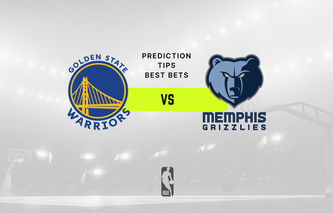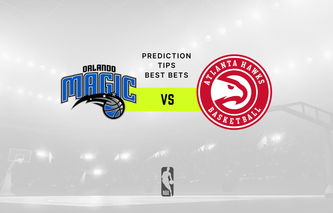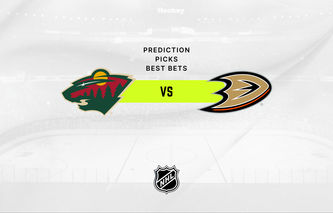Moneyline betting is a popular and straightforward method of sports wagering, where bettors simply choose a team, player, or athlete to win a game or event.
This type of betting eliminates the need for point spreads and focuses solely on the outcome of the match.
By understanding moneyline odds and the difference between betting on favorites and underdogs, bettors can significantly increase their chances of success in this market.
Bookmakers establish favorites and underdogs by assigning a numerical value called the “odds.”
These odds serve as a reference for calculating potential payouts and determining the implied probability of the outcome.
Each sport has its nuances, and bettors must consider various factors, such as historical performance, injuries, and matchup statistics, when placing a moneyline bet.
Additionally, comparing moneyline odds to point spread and other betting types will help bettors make the most informed decision when choosing their wager.
Key Takeaways
Moneyline betting focuses on the outright winner, eliminating the need for point spreads.
Bettors must consider the odds for favorites and underdogs to calculate potential payouts.
Comparing moneyline odds to other betting types can help inform bettors’ decisions.
Understanding Moneyline Betting
Moneyline betting is a popular and straightforward method in sports betting that involves selecting the outright winner of a game or event.
Unlike spread betting, point spreads, or over/under betting, there are no handicaps or total points assigned, making it a simple choice between two teams or participants.
How It Works
A moneyline bet consists of choosing one team or participant to win a particular game or event. The odds for each side are represented through numerical values, which indicate the potential returns on a successful wager.
In moneyline betting, teams are categorized into favorites and underdogs based on their likelihood of winning the event.
Favorites are the teams or participants expected to win an event and are represented by negative odds.
Underdogs are the teams or participants expected to lose and are represented by positive odds.
The risk and reward ratio in moneyline betting depend on the odds assigned to each team or participant.
Generally, betting on the favorite offers a lower payout but a higher probability of winning, while betting on the underdog offers a higher payout but a lower probability of winning.
American Odds Format
In the American odds format, the odds for favorites are displayed as negative numbers, while the odds for underdogs are displayed as positive numbers.
The negative odds for favorites indicate the amount of money you would need to wager to win $100, while the positive odds for underdogs indicate the amount of money you could win for a $100 bet.
Example:
Team | Odds |
|---|---|
Team A | -150 |
Team B | +200 |
In this example, Team A is the favorite, and to win $100, you would need to wager $150. On the other hand, if you wager $100 on Team B as the underdog, you would win $200 if they were to emerge victorious.
Betting on Favorites and Underdogs
Identifying Favorites and Underdogs
In sports betting, understanding the distinction between favorites and underdogs is essential. The favorite is the team that has a higher probability of winning, while the underdog is the team that is less likely to win.
These distinctions are made based on various factors, such as past performance, team composition, and public opinion.
When looking at betting odds, you’ll typically see a plus sign (+) or a minus sign (-) associated with each team. That brings us to the next sub-section.
Plus Sign and Minus Sign
The plus sign (+) and minus sign (-) are used to denote the odds of each team winning. A minus sign (-) represents the favorite team with negative odds, while a plus sign (+) represents the underdog team with positive odds.
For example, a team with (-180) odds would be the favorite, whereas, a team with (+150) odds would be the underdog.
In this case, the negative odds (-180) imply that you would need to bet $180 to potentially win $100, while the positive odds (+150) imply that a $100 bet could potentially win you $150.
By understanding the concepts of favorites and underdogs, plus signs and minus signs, bettors can make informed decisions on which team to place a wager on and set realistic expectations of their potential winnings.
Calculating Payouts and Implied Probability
Payout Calculation
To calculate the potential payout from a moneyline bet, use different equations based on the odds’ sign. For positive odds, the formula is:
Potential Profit = Stake * (Odds / 100)
For negative odds, the formula changes to:
Potential Profit = Stake / (Odds / 100)
Remember to add your stake when calculating the total payout. Let’s look at two examples:
Betting $100 on a team with +200 odds:
Potential Profit = $100 * (200 / 100) = $200
Total Payout = $100 (stake) + $200 (profit) = $300
Betting $100 on a team with -150 odds:
Potential Profit = $100 / (150 / 100) = $66.67
Total Payout = $100 (stake) + $66.67 (profit) = $166.67
Implied Probability Formula
Implied probability helps bettors determine the likelihood of an outcome. You can calculate the implied probability using the given odds. For positive odds, the formula is:
Implied Probability = 100 / (Odds + 100)
For negative odds, the formula changes to:
Implied Probability = abs(Odds) / (abs(Odds) + 100)
This will provide you with implied probability in percentage form. Let’s see examples using the same odds as before:
Implied probability for a team with +200 odds:
Implied Probability = 100 / (200 + 100) = 100 / 300 = 33.33%
Implied probability for a team with -150 odds:
Implied Probability = 150 / (150 + 100) = 150 / 250 = 60%
Calculators will perform these calculations for you. Additionally, being aware of the juice (or the bookmaker’s cut) is important to ensure you’re getting fair odds.
Moneyline Betting in Different Sports
Moneyline betting is a popular and straightforward way to bet on various sports. In this type of wager, bettors choose a team or individual athlete to win a game or match.
The outcome is determined by the team or athlete’s performance, rather than by a point spread or other factors. Here, we will discuss moneyline betting in different sports such as football, basketball, baseball, soccer, hockey, and UFC.
Football
In football, specifically the NFL, moneyline bets are popular bets on individual games. Bettors choose a team to win outright, without considering the point spread.
The odds depend on the perceived strength of each team and are adjusted based on factors such as form, injuries, and home-field advantage. The moneyline bet is straightforward, making it a popular choice for novice bettors.
Basketball
In basketball, including the NBA, moneyline betting involves picking the winner of a single game or match. The odds are set based on each team’s strength and other relevant factors, such as player injuries and recent performance.
Moneyline betting can be applied to both regular-season and playoff games, as well as individual player performance props.
Baseball
In MLB games, moneyline betting is focused on the outcome of individual games. Bettors choose one team to win the game, without considering the run line (the baseball equivalent of a point spread).
The odds are set based on the starting pitchers, recent team performance, and other relevant factors. Moneyline bets are an easy way for both experienced and novice bettors to wager on baseball games.
Soccer
In soccer, moneyline bets are also known as “three-way” bets because they include the possibility of a draw in addition to the two competing teams winning.
Bettors may choose a team to win or opt for a draw, depending on the odds and their analysis of the teams. Moneyline bets can be placed on individual matches, tournaments, and even player performance props.
Hockey
In hockey, particularly the NHL, moneyline betting is a popular choice for wagering on individual games. Bettors simply need to pick the team they believe will win the game without considering the goals or point spread.
As in other sports, the odds are set based on team strength, recent performance, injuries, and other relevant factors.
UFC
In UFC and other combat sports, moneyline betting is often applied to individual fights or matches. Bettors pick a fighter to win, and the odds are set based on each athlete’s perceived skill, previous fight record, and other factors.
Moneyline bets in UFC are particularly popular due to the limited number of potential outcomes, making them a straightforward choice for bettors of varying skill levels.
Betting Strategies and Tips
Analyzing Teams and Players
When it comes to moneyline betting, a crucial step is to analyze the teams and players involved. Research their recent performance, winning and losing streaks, injuries, and other factors affecting their game.
For example, in a football game, consider the team’s offensive and defensive capabilities, player stats, and even the impact of weather conditions. Comparing these variables can help bettors identify potential winning outcomes.
Managing Bankroll
Successful betting requires proper bankroll management. Bettors should determine a comfortable amount of money to allocate for placing bets, avoiding the temptation to invest too much in a single wager. Instead, they should spread their funds over several bets to minimize risk, aiming to secure gradual profits.
A common strategy is the unit system, where bettors risk a set percentage of their bankroll on each bet, allowing for better control over potential losses.
Bankroll | 1% Unit Size | 2% Unit Size | 5% Unit Size |
|---|---|---|---|
$100 | $1 | $2 | $5 |
$500 | $5 | $10 | $25 |
$1,000 | $10 | $20 | $50 |
Finding Value in Underdogs
Moneyline betting often involves finding value in underdogs. These are typically teams or players with higher odds, which can lead to higher payouts if they end up winning.
While underdogs may not be as likely to win as favorites, upsets occur frequently in sports, making them a valuable prospect for bettors.
Assessing underdogs’ potential based on their recent performance and any relevant factors can reveal hidden opportunities for profits. Remember to maintain a neutral perspective and consider both the risks and rewards when choosing to bet on underdogs.
Moneyline vs. Point Spread Betting
Comparing Odds and Payouts
Moneyline bets involve choosing the winner of a game or event without considering a handicap or point spread. In this type of bet, odds are expressed as positive or negative numbers, e.g., +200 for the underdog and -150 for the favorite.
Positive numbers indicate how much profit you would make from a $100 bet, while negative numbers show how much you would need to bet to win $100.
On the other hand, point spread betting (also called handicap or spread betting) involves wagering on the difference in the final score between two teams. Here, the bookmaker assigns a handicap to the teams with one team receiving an advantage in points, while the other is given a disadvantage.
For example, Team A might have -3.5 points, while Team B has +3.5 points. If you bet on Team A, they need to win by a margin of more than 3.5 points for you to win the bet.
Conversely, if you bet on Team B, they can lose by up to 3.5 points or win the game, and you would still win the bet.
Type of Bet | Odds | Potential Payout |
|---|---|---|
Moneyline | +200 | $200 profit |
Moneyline | -150 | $66.67 profit |
Point Spread | -3.5 (-110) | $90.91 profit |
Point Spread | +3.5 (-110) | $90.91 profit |
Choosing the Right Bet
When deciding between moneyline and point spread bets, consider the following factors:
Payout: Moneyline bets usually offer higher payouts for underdogs and lower payouts for favorites. Point spread bets may have a more consistent potential payout, depending on the odds.
Matchup: If you believe the underdog could win the game outright or that the favorite can overcome a significant point spread, moneyline bets might be more attractive. Conversely, point spread betting is ideal if you expect a close game or believe that the underdog will lose, but cover the point spread.
Risk tolerance: Moneyline bets on underdogs can provide greater potential for profits but also entail higher risks. Point spread bets can be seen as a more conservative approach, as they account for the teams’ relative strengths.
Sport and playing style: Moneyline bets are more popular in low-scoring sports like the MLB or NHL, while point spread bets are common in higher-scoring sports like the NFL and NBA. The scoring tendencies of the teams involved should also be considered when choosing your bet.
By understanding the differences, odds, and payouts between moneyline and point spread betting, you can make informed decisions about which type of bet is better suited for your strategy and preferences.
Other Betting Types and Terminology
Fractional Odds
Fractional odds are a traditional method of representing odds, mainly used in the UK and Ireland. They are expressed as a fraction, such as 5/1 or 10/3.
When reading fractional odds, the numerator (top number) indicates potential profit, while the denominator (bottom number) represents the amount you need to wager to gain that profit.
For example, if you bet $10 on a team with 5/1 odds, you could win $50 ($10 x 5) plus your original stake of $10, totaling $60.
Draw
In some sports, such as soccer, games can end in a tie or draw. When this occurs, bettors who wagered on a draw outcome will win their bets.
However, sports like the NFL, where draws are relatively rare, usually offer bets on the outcome of games without a draw option.
For UFC events, a draw could mean a match ending in a split decision or majority draw, although these results are infrequent.
Vigorish
Vigorish, also known as the “vig” or the “juice,” is the commission that a bookmaker charges for taking a bet. In essence, it’s how sports betting sites make their profit.
When looking at betting odds, the vigorish can be observed in the difference between the risk and potential payout.
For instance, a bettor might need to risk $110 to win $100 on the Yankees to win the Super Bowl. The extra $10 represents the vigorish.
Popular Sports Betting Events
Super Bowl
The Super Bowl is one of the most popular events in sports betting, as it decides the champion of the National Football League (NFL) each year. Betters can place various types of bets, including moneyline wagers predicting the winner.
Super Bowl moneyline bets typically see a huge surge in activity, owing to the excitement and attention the event garners.
World Series
The World Series is the championship series of Major League Baseball (MLB) and another popular event for sports betting enthusiasts.
During the World Series, fans place moneyline bets on individual games or the overall series outcome to predict the winning team.
The best-of-seven format provides multiple opportunities for bettors to place wagers and engage in the excitement of the fall classic.
NBA Finals
The NBA Finals determine the champion of the National Basketball Association (NBA) and are another popular sports betting event.
Fans place moneyline bets on individual games, as well as the series outcome, to predict the winning team. The NBA Finals’ best-of-seven format allows for numerous betting opportunities and consistently draws interest from basketball fans and bettors alike.
College Football Championship
The College Football Championship, organized by the College Football Playoff (CFP) system, decides the winner of NCAA Division I FBS football.
This event typically attracts significant attention from both fans and bettors, with moneyline wagers placed on the championship game.
Given the high stakes and strong rivalries between competitor schools, the College Football Championship offers an exciting landscape for sports betting enthusiasts.
Sportsbook Odds and Considerations
When exploring the world of sports betting, understanding sportsbook odds and making well-informed decisions is essential.
This section will provide insights into choosing a reputable sportsbook and the importance of understanding line movements.
Choosing a Reputable Sportsbook
Selecting a reputable sportsbook is crucial for bettors looking to maximize their winning potential and have a smooth betting experience.
Look for sportsbooks with a solid track record, good reputation, and positive customer reviews. These factors help ensure that the odds offered are fair and that bettors’ funds are secure.
Additionally, consider whether the sportsbook offers competitive odds, a wide range of betting options, and user-friendly navigation.
When comparing sportsbooks, evaluate the following factors:
Reputation and history
Competitive odds
A variety of betting markets
User-friendly interface and mobile compatibility
Reliable customer service
Fast and secure deposit and withdrawal methods
Understanding Line Movements
Line movements in sportsbook odds refer to the changes in betting odds as wagers are placed and sportsbooks adjust the odds to manage risk.
Tracking line movements can serve as a useful tool for bettors to identify advantageous betting opportunities or to gauge the overall betting sentiment behind a particular game.
There are two primary reasons for line movements:
Betting action: As more bets are placed on one side, sportsbooks may adjust the odds to balance the action, attracting more wagers on the other side. This helps them to minimize their risk.
Injury reports or breaking news: Unexpected news, such as injuries to key players or other relevant updates, can impact the odds. Sportsbooks quickly update the odds to account for these developments.
To effectively make use of line movements, bettors should pay close attention to both pre-game and in-game line movements.
By monitoring these changes, bettors can potentially take advantage of discrepancies in the odds and identify valuable betting opportunities. This approach requires vigilance, as line movements can occur rapidly.
Remember, understanding sportsbook odds and the factors affecting them is vital for successful betting. Choose a reputable sportsbook and utilize line movement information to make well-informed decisions that increase your chances of winning.
Frequently Asked Questions
How do moneyline bets work?
Moneyline bets are simple wagers where you bet on a team to win the game, without any point spread or other conditions. If the team you bet on wins, your bet pays out based on the odds.
Is Moneyline a good bet?
There’s no definitive answer; it depends on the bettor’s risk tolerance and the specific circumstances. Moneyline bets can be a good option for those who prefer straightforward betting, without the need to consider points spreads. Just remember that odds play a crucial role in determining potential payouts and risk level.
Moneyline vs spread: which is better?
Both moneyline and spread betting have their pros and cons. While moneyline bets are simpler, they might not offer as much value as spread bets when the odds are heavily in favor of one team. On the other hand, spread bets require a consideration of the margin of victory, adding a layer of complexity. Ultimately, the choice depends on your betting strategy and preferences.
How to calculate moneyline payouts?
Calculating moneyline payouts depends on the odds. Positive odds represent potential profit on a $100 bet, while negative odds indicate how much you need to bet to win $100. For example, a +150 moneyline bet means you win $150 if you bet $100. Conversely, a -150 moneyline means you need to bet $150 to win $100. You can use online calculators to determine exact payouts.
What does negative moneyline mean?
A negative moneyline denotes that the team is favored to win. The number represents the amount you need to wager to win $100. For instance, a -150 moneyline means you must bet $150 to potentially win $100.
What is a moneyline bet in football?
A moneyline bet in football is where you bet on one team to win the game without any point spread or other stipulations. If the team you bet on wins, you win the bet based on the odds. It’s available in both American and European football, as well as other sports.






